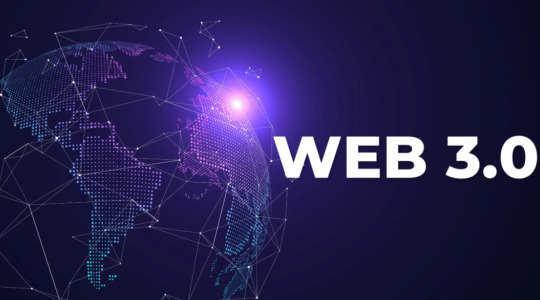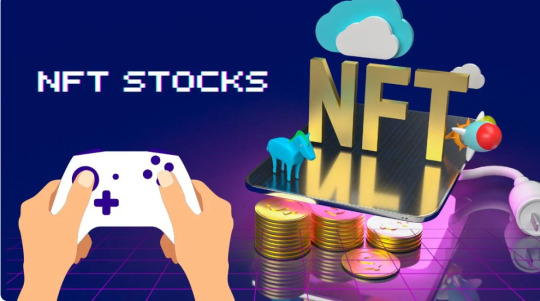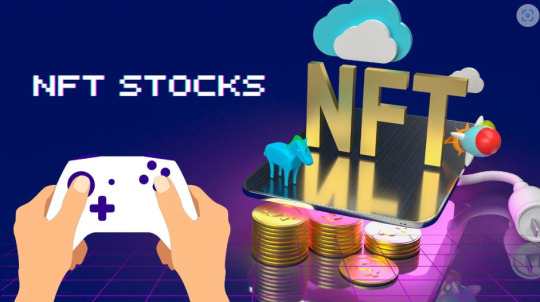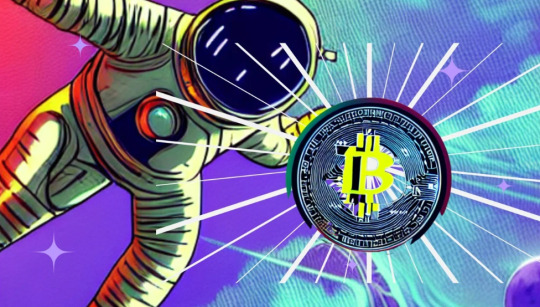Don't wanna be here? Send us removal request.
Text
Difference between Web 3.0 and Web2.0
https://web3oclock.com/web-3-0-vs-web-2-0-definition-benefit-advantage-disadvantage/ Web3 and Web2 are terms used to describe different stages of the internet's evolution and the technologies that support it. Web2, which is also referred to as the Social Web, is the current version of the internet that we use today. Web3, on the other hand, is the next stage of the internet's evolution and is sometimes referred to as the Decentralized Web.
The main difference between Web3 and Web2 is how they handle data and the way users interact with it. Web2 relies heavily on centralized servers to store and manage data. This means that companies like Google, Facebook, and Amazon have a lot of power over user data and can manipulate it for their own purposes.
In contrast, Web3 is built on decentralized blockchain technology, which allows for a more transparent and secure way to store and share data. With Web3, users have more control over their data, and it is not owned by any single entity. This creates a more democratized internet that is less susceptible to censorship and manipulation.
Another key difference between Web3 and Web2 is how they handle transactions. Web2 relies on traditional financial institutions like banks to process payments and manage transactions. In contrast, Web3 uses cryptocurrencies and smart contracts to facilitate peer-to-peer transactions. This means that users can send and receive payments without the need for a middleman, making transactions faster, cheaper, and more secure.
Web3 also has the potential to revolutionize industries beyond just finance. With its decentralized nature, it could transform the way we approach healthcare, education, and even government. For example, it could allow for the creation of more transparent and efficient healthcare systems, where patient data is securely stored on the blockchain and can be accessed by doctors and researchers as needed.
Overall, the key difference between Web3 and Web2 is that Web3 is built on decentralized technology, which allows for a more democratic, secure, and transparent internet. While Web2 has served us well for the past few decades, Web3 has the potential to transform the internet and the way we interact with it in a truly revolutionary way.
Web3 represents a significant advancement over the current Web2 era, offering a range of advantages and benefits. Here are some of the key advantages of Web3:
Decentralization: Web3 is based on a decentralized and distributed network, which eliminates the need for intermediaries and central authorities. This creates a more democratic and transparent digital world, where users have more control over their data and digital assets.
Security: Web3 is built on blockchain technology, which provides a secure and transparent way to store data and execute transactions. This eliminates the risk of data breaches and cyberattacks, which are common in the Web2 era.
Transparency: Web3 provides a transparent way to track and verify transactions. This creates greater trust and confidence in the digital world, which is essential for the growth of online commerce and other activities.
Interoperability: Web3 platforms are designed to be interoperable, allowing different platforms to work together seamlessly. This creates new opportunities for collaboration and innovation across different platforms and applications.
Privacy: Web3 enables users to control their data and digital assets, and they can decide who has access to them. This creates a more private and secure digital world, where users are protected from data breaches and other security threats. User control: Web3 gives users more control over their data and digital assets. Users can own and control their data, and they can decide who has access to it. This is in contrast to Web2, where users often have to surrender control of their data to centralized platforms.

0 notes
Text

https://web3oclock.com/evolution-of-web-web-1-0-web-2-0-web-3-0-web-5-0/
Web 5.0 is a proposed successor to Web 3.0 that would focus on decentralization and user control of data. It is being developed by Jack Dorsey's Bitcoin business unit, The Block Head (TBH). Web 5.0 would use blockchain technology to create a decentralized web where users would own their own data and identity. This would allow users to control who has access to their data and how it is used. Web 5.0 would also be more secure than Web 3.0, as it would not rely on centralized servers. Some of the key features of Web 5.0: Decentralization, User control of data, Personalization,Interoperability Web 5.0 is still in its early stages of development, but it has the potential to revolutionize the way we use the internet. It could make the internet more secure, private, and open, and it could give users more control over their data and identity.
0 notes
Text
Risks of investing in NFT Stocks?
Risks of investing in NFT Stocks?
While investing in NFT stocks can offer potential opportunities for growth and profitability, it is important to be aware of the risks involved. Here are some risks of investing in NFT stocks:
Market Volatility: The NFT market is relatively new and still evolving. It can be highly volatile, experiencing significant price fluctuations and sudden changes in investor sentiment. The value of NFT stocks may be influenced by market trends, regulatory developments, and changes in consumer preferences, making them susceptible to rapid price swings.
Lack of Regulation: The regulatory framework surrounding NFTs and the broader cryptocurrency market is still developing. This lack of regulatory oversight can lead to uncertainties and risks for investors. Changes in regulations or government actions could impact the value and trading of NFTs, affecting the performance of NFT stocks.
Market Saturation: The increasing popularity of NFTs has led to a flood of new projects, collections, and marketplaces. This oversaturation can make it challenging for individual NFTs or NFT platforms to stand out and maintain their value. Investing in NFT stocks may involve the risk of investing in companies that are unable to differentiate themselves or capture a significant market share.
Technology Risks: NFTs are built on blockchain technology, which is still relatively nascent and subject to technical challenges. Issues such as network congestion, security vulnerabilities, or scalability concerns could impact the functionality and adoption of NFT platforms. Companies heavily reliant on NFT technology may face risks associated with these technological limitations.
Lack of Fundamental Value: NFTs derive their value from scarcity, uniqueness, and perceived collectibility. However, the value of NFTs can be subjective and speculative, with no underlying fundamentals or cash flows supporting their prices. This lack of intrinsic value can make NFT stocks more susceptible to speculative bubbles and sharp price corrections.
Reputation and Counterparty Risks: The success of NFT platforms and projects is often tied to the reputation and credibility of the individuals or organizations behind them. Investing in NFT stocks means being exposed to the risks associated with the reputation of the company and its ability to deliver on its promises. Scams, frauds, or controversies involving NFT platforms or key personnel could have negative consequences for the associated NFT stocks.
Liquidity Risks: The liquidity of NFT stocks may vary, especially for smaller or less-established companies. Limited trading volume and a lack of market depth can make it difficult to buy or sell shares at desired prices, potentially leading to higher transaction costs or delays in executing trades.
It's essential to thoroughly research and assess these risks before making any investment decisions. Diversification, understanding the underlying business models, and staying informed about the evolving NFT landscape can help mitigate some of these risks. Consulting with a financial advisor or professional who specializes in investments and emerging technologies can provide valuable guidance.

0 notes
Text
Top 5 NFT Stocks to Consider Investing in 2023
NFTs (Non-Fungible Tokens) have gained significant popularity in recent years, revolutionizing the digital asset landscape. As the NFT market continues to expand, investing in NFT stocks can offer an opportunity to participate in this rapidly growing industry. In this article, we will explore the top five NFT stocks that you should consider investing in 2023.
Dolphin Entertainment (DLPN):
Dolphin Entertainment is an entertainment marketing and premium content development firm that has shown a strong focus on the digital space. The company's flagship NFT collection, Creature Chronicles, sold out in record time, highlighting its potential in the NFT market. Despite the challenges faced by the FTX collapse, Dolphin Entertainment reported record revenue in Q4 2022 and anticipates turning profitable in 2023.
eBay (EBAY):
As a well-known e-commerce brand, eBay has embraced NFTs by allowing customers to buy and sell them on its platform since May 2021. The company further expanded its NFT presence by acquiring NFT marketplace KnownOrigin. eBay has also ventured into creating exclusive NFTs, collaborating with notable figures such as football player Kayvon Thibodeaux. With recent strategic changes to drive revenue and a 2.35% dividend, eBay remains an attractive option.
Cloudflare (NET):
While not primarily an NFT company, Cloudflare, a web performance and security firm, plays a vital role in the NFT ecosystem. Through its streaming service, Cloudflare Stream, video creators who store their content on the platform can create NFTs for their work on marketplaces like OpenSea. Cloudflare has demonstrated strong growth in large-customer acquisition, surpassing sales and earnings estimates in Q1. These factors position Cloudflare as a solid investment option.
McDonald's (MCD):
The renowned fast-food chain, McDonald's, has made notable strides in the NFT space. With ten trademark applications submitted, McDonald's aims to establish a presence in the metaverse by offering virtual and physical products, entertainment services, and NFTs. As a blue-chip stock and Dividend Aristocrat, McDonald's can provide stability within a portfolio alongside riskier investments.
Mattel Inc. (MAT):
Known for producing iconic toys under brands like Barbie and Hot Wheels, Mattel recently launched an NFT marketplace on its collector and direct-to-consumer platform, Mattel Creations. One notable aspect is that consumers can purchase NFTs without the need for cryptocurrency, increasing accessibility. Additionally, Mattel plans to introduce a peer-to-peer platform for NFT trading. With a favorable P/E ratio and a 12-month price target above its current value, Mattel stock offers solid value.
Conclusion:
Investing in NFT stocks provides an opportunity to capitalize on the rapidly expanding NFT market. As demonstrated by Dolphin Entertainment, eBay, Cloudflare, McDonald's, and Mattel, these companies offer unique advantages and involvement in the NFT space. However, it's important to conduct thorough research, consider your risk tolerance, and consult with a financial professional before making any investment decisions. NFT stock investing can be an exciting and potentially profitable venture, allowing you to participate in the innovative world of digital assets.

0 notes
Text
Benefits of investing in stock market
Investing in NFT (Non-Fungible Token) stocks can offer several potential benefits. Here are some key advantages of investing in NFT stocks:
Exposure to the NFT Market: NFTs have gained significant popularity in recent years, especially in the art and digital collectibles space. By investing in NFT stocks, you gain exposure to this growing market. If the NFT industry continues to expand, the stocks of companies involved in NFTs may experience positive growth.
Diversification: Including NFT stocks in your investment portfolio can provide diversification. By investing in different sectors and asset classes, you reduce the risk associated with relying solely on one type of investment. NFT stocks can be an additional diversification tool if you already have exposure to other sectors.
Potential for High Returns: NFTs have shown the potential for high returns, with some digital artworks and collectibles selling for significant sums of money. If the companies involved in the NFT space perform well and capture a share of this market, their stocks may experience substantial growth, potentially leading to high returns for investors.
Innovation and Disruption: NFTs represent a new technology and business model that has the potential to disrupt various industries, including art, gaming, music, and more. Investing in NFT stocks allows you to be part of this innovation and potentially benefit from the transformation these technologies bring.
Partnership Opportunities: Companies that are involved in NFTs often form partnerships with artists, musicians, celebrities, and other influential individuals. These collaborations can increase the visibility and value of NFTs and the associated companies. As an investor in NFT stocks, you indirectly participate in these partnerships and potentially benefit from the resulting exposure and growth.
It's important to note that investing in NFT stocks, like any investment, carries risks. The NFT market is relatively new and volatile, with uncertainties surrounding regulations, market acceptance, and potential future developments. Before making any investment decisions, it's advisable to conduct thorough research, consider your risk tolerance, and consult with a financial advisor who can provide personalized advice based on your individual circumstances

0 notes
Text
The Future of Web3 Gaming
https://web3oclock.com/web3-gaming-waxvapour-labs/
The emergence of Web3 gaming has brought about a significant transformation in the gaming industry, thanks to the advancement of blockchain technology and the rise of non-fungible tokens (NFTs). Waxvapour Labs is a startup that aims to simplify the complex world of Web3 gaming. The co-founders, Jyotirman and Vaibhav, share their journey and vision to create a unified gaming currency that will help address the dilution of the market and provide a more stable and trustworthy solution.
In this exclusive interview, Jyotirman and Vaibhav share their inspiration for founding Waxvapour Labs, their coin's utility, their plans to support indie game developers, their hybrid revenue model, and the challenges and opportunities of being a Web3 startup.
The gaming industry is facing a problem of diluted game-related currencies, where every new Web3-enabled game forks its own currency. Waxvapour Labs is creating a unified game currency that can help immensely with a simpler approach of using one currency. The coin also eliminates the need for hosting your chain or joining a larger network by forking. Game studios will be able to use Waxvapour Labs' network chain via an API as well as a node hosted by themselves.
The coin also carries an NFT store that will reflect what players earn in the game, which they can collect, trade, or sell with their properties. The consensus of the coin is based on the user's performance in the game, and the quantity of coins mined depends on how complex the game is. The team plans to launch it soon, giving indie game developers a chance to integrate their games with the network without using any costly or complex solutions out there.
The company has a hybrid revenue model that includes both B2B and B2C components such as integration charges from game development studios, NFT-based advertising models, and royalty on cross-platform purchases. The team believes that Web3 is the eventual progression of social media and networks, and more and more companies and people are understanding the need for decentralized networks.
In conclusion, Waxvapour Labs' co-founders, Jyotirman and Vaibhav, are at the forefront of the Web3 gaming industry, and their vision to create a unified gaming currency is poised to transform the industry. The company's coin is addressing the dilution of the market, and its utility will provide a more stable and trustworthy solution for gamers and game developers. The team's passion for the future of Web3 is contagious, and their insights into the challenges and potential of this emerging industry are invaluable.

0 notes
Text
Future of the Crypto Industry in 2023: Crypto Regulations, Perspectives, and Adoption
Future of Crypto Industry
The crypto industry has experienced rapid growth and innovation over the past decade, capturing the attention of investors, businesses, and governments worldwide. As we look ahead to 2023, this blog post explores the future of crypto industry, focusing on key areas such as crypto regulations, perspectives, and adoption. Understanding these factors will shed light on the potential trajectory of the industry in the coming years.
Crypto Regulations: Striking a Balance:
Regulatory frameworks for cryptocurrencies are evolving as governments seek to strike a balance between fostering innovation and protecting investors. In 2023, we can expect to see continued efforts by governments to implement clearer regulations in order to mitigate risks associated with fraud, money laundering, and market manipulation. Stricter Know Your Customer (KYC) and Anti-Money Laundering (AML) procedures are likely to be imposed on crypto exchanges and service providers to ensure compliance with existing financial regulations.
However, it is crucial for regulators to adopt an approach that does not stifle innovation or hinder the growth of the industry. Proactive collaboration between regulators, industry stakeholders, and technology experts will be essential in developing regulatory frameworks that provide consumer protection while allowing for the continued development and adoption of cryptocurrencies.
Shifting Perspectives: Mainstream Acceptance:
In 2023, we can anticipate a continued shift in perspectives towards mainstream acceptance of cryptocurrencies. Institutional investors, including traditional financial institutions and asset managers, are likely to increase their involvement in the crypto space. This growing institutional interest will bring additional credibility and liquidity to the market, contributing to the maturation of the industry.
Moreover, consumer attitudes towards cryptocurrencies are also changing. As awareness and understanding of crypto assets increase, more individuals are embracing cryptocurrencies as a store of value, investment opportunity, or means of conducting transactions. This changing perspective will further drive adoption and integration of cryptocurrencies into everyday financial activities.
Increased Adoption and Integration:
The adoption and integration of cryptocurrencies into various sectors of the economy will continue to expand in 2023. We can expect to see greater acceptance of cryptocurrencies as a payment method by businesses, including e-commerce platforms, service providers, and even traditional brick-and-mortar establishments. The growth of decentralized finance (DeFi) will further enhance the accessibility and functionality of crypto assets, offering a wide range of financial services such as lending, borrowing, and yield farming.
Additionally, governments and central banks are exploring the development of central bank digital currencies (CBDCs). CBDCs will likely coexist with cryptocurrencies and provide a bridge between the traditional financial system and decentralized digital assets, potentially accelerating mainstream adoption and increasing regulatory oversight.
Technological Advancements: Scalability and Interoperability:
Scalability and interoperability are critical challenges that the crypto industry must address to achieve widespread adoption. In 2023, we can anticipate significant advancements in blockchain technology, with the implementation of solutions such as layer-two protocols, sharding, and sidechains. These technological developments will enhance transaction throughput, reduce fees, and improve scalability, making cryptocurrencies more practical for everyday use.
Moreover, interoperability between different blockchain networks will become increasingly important. Efforts to establish standards and protocols that enable seamless communication and exchange of assets across different blockchains will foster collaboration and integration within the broader crypto ecosystem.
The future of the crypto industry in 2023 holds immense potential for growth, innovation, and mainstream acceptance. Clearer regulatory frameworks will provide a more secure environment for investors and businesses, striking a balance between consumer protection and innovation. Shifting perspectives towards cryptocurrencies as legitimate investment and payment options, coupled with increased adoption and integration, will drive the industry's expansion. Technological advancements in scalability and interoperability will further enhance the functionality and usability of crypto assets

0 notes
Text
5 Reasons How Security Tokens Can Change the Corporate Fundraising Landscape
Security Tokens
Traditional methods of corporate fundraising have long relied on complex and often exclusive processes, limiting access to investment opportunities for both companies and investors. However, the emergence of security tokens is poised to revolutionize the corporate fundraising landscape. In this blog post, we will explore five key reasons how security tokens can change the way companies raise capital, making it more accessible, efficient, and inclusive.
Increased Liquidity:
One of the significant advantages of security tokens is their potential to enhance liquidity in the fundraising process. Unlike traditional fundraising methods such as initial public offerings (IPOs) or private placements, security tokens can be traded on digital asset exchanges, allowing for secondary market transactions. This increased liquidity provides investors with an opportunity to exit their investments and potentially attract more capital to companies, as investors have more flexibility and confidence in their ability to liquidate their holdings.
Fractional Ownership and Accessibility:
Security tokens enable fractional ownership, dividing company equity into smaller, tradable units. This fractionalization makes investment opportunities more accessible to a broader range of investors, including retail investors who may not have the resources to participate in traditional fundraising methods. By lowering the barriers to entry, security tokens democratize investment and allow a wider pool of individuals to support and benefit from the growth of companies.
Enhanced Transparency and Compliance:
Security tokens are built on blockchain technology, offering transparent and immutable records of ownership and transactions. This increased transparency improves investor confidence and reduces the risk of fraudulent activities. Additionally, security tokens can be programmed with smart contracts, automating compliance requirements such as regulatory filings and investor protections. The use of blockchain and smart contracts streamlines the fundraising process, ensuring adherence to regulatory frameworks and reducing administrative burdens.
Global Access and Efficiency:
Security tokens have the potential to remove geographical limitations and facilitate cross-border investments. By utilizing blockchain technology, companies can reach a global investor base, unlocking a wider pool of potential backers. Furthermore, the use of security tokens reduces intermediaries, streamlining the fundraising process and making it more efficient. This efficiency leads to cost savings for both companies and investors, as it eliminates the need for intermediaries such as investment banks or brokers.
Improved Investor Rights and Governance:
Security tokens can be programmed with built-in investor rights and governance mechanisms, embedded within smart contracts. This ensures that investors' rights and protections are explicitly defined and automatically enforced. For example, dividend payments, voting rights, or access to company information can be coded into the security token, reducing the risk of misaligned interests or shareholder disputes. The transparent and programmable nature of security tokens enhances corporate governance practices, fostering trust and accountability between companies and their investors.
Conclusion:
Security tokens have the potential to transform the corporate fundraising landscape by bringing increased liquidity, fractional ownership, transparency, accessibility, and efficiency to the table. These advantages provide a compelling case for companies seeking capital and investors looking for new opportunities. As the regulatory environment evolves to accommodate this emerging asset class, security tokens have the potential to democratize fundraising, enabling a broader investor base to participate in supporting innovative companies. With the continued development of blockchain technology and the adoption of security tokens, we can anticipate a more inclusive and efficient corporate fundraising ecosystem.

0 notes
Text
The Impact of the Covid-19 Pandemic on the Crypto Industry
https://web3oclock.com/impact-of-covid-19-pandemic-in-the-crypto-industry/
Introduction:
The Covid-19 pandemic has caused significant disruptions across various sectors worldwide, and the crypto industry has not been immune to its effects. In this blog post, we will explore the impact of the pandemic on the crypto industry, examining both the challenges and opportunities that have arisen during these unprecedented times.
Increased Interest and Adoption:
The pandemic has sparked a surge in interest and adoption of cryptocurrencies. As traditional markets experienced volatility and uncertainty, investors sought alternative investment opportunities. The decentralized nature of cryptocurrencies, combined with the potential for high returns, attracted many new participants to the crypto space. This increased demand led to a rise in crypto prices and expanded the user base of crypto exchanges and platforms.
Safe Haven Narrative:
During times of economic uncertainty, cryptocurrencies, particularly Bitcoin, have been regarded as a potential safe haven asset. Similar to gold, Bitcoin is often seen as a store of value that can protect against inflation and economic instability. The pandemic-induced economic downturn and government stimulus measures further fueled the narrative of cryptocurrencies as a hedge against traditional financial systems.
Market Volatility:
While cryptocurrencies experienced a surge in interest, they also faced heightened volatility during the pandemic. The sudden and drastic fluctuations in global financial markets had a direct impact on crypto prices. Initially, there was a significant market crash in March 2020, with cryptocurrencies experiencing sharp declines. However, they demonstrated resilience by recovering relatively quickly and even outperforming traditional assets in some cases.
Acceleration of Digital Payments:
The pandemic accelerated the shift towards digital payments, which in turn increased the utility and adoption of cryptocurrencies. With physical cash being seen as a potential carrier of the virus, people turned to contactless payment methods. Cryptocurrencies, with their borderless and frictionless nature, gained traction as an alternative means of conducting transactions. This trend was further propelled by the development of Central Bank Digital Currencies (CBDCs) and the growing acceptance of cryptocurrencies by mainstream companies.
Regulatory Response:
The pandemic also highlighted the need for clearer regulatory frameworks in the crypto industry. Governments and regulatory bodies recognized the importance of digital currencies but raised concerns regarding security, fraud, and money laundering. As a result, some countries introduced new regulations or amended existing ones to provide better oversight and protection for investors. The increased regulatory scrutiny aimed to strike a balance between innovation and consumer protection, ensuring the long-term stability and growth of the crypto industry.
Conclusion:
The Covid-19 pandemic has had a profound impact on the crypto industry, shaping its trajectory and accelerating its growth in several ways. The increased interest and adoption of cryptocurrencies, the emergence of digital payments, and the recognition of cryptocurrencies as potential safe haven assets have all contributed to the industry's resilience and expansion. However, the heightened market volatility and regulatory challenges have underscored the need for careful consideration and risk management when engaging in the crypto space. As the world navigates the post-pandemic era, it will be fascinating to observe how the crypto industry continues to evolve and adapt to the changing landscape.

0 notes
Text
Advantages & Disadvantages of Web 2.0
Advantages and disadvantages of web 2.0
Web 2.0 refers to the second generation of the World Wide Web, characterized by the use of interactive and collaborative features that allow users to participate in creating and sharing content. Here are some of the advantages and disadvantages of Web 2.0:
Advantages:
User-Generated Content: Web 2.0 allows users to create and share content easily, giving rise to a vast amount of user-generated content on the web. This content can be valuable for individuals, businesses, and organizations looking to reach a broader audience.
Social Networking: Web 2.0 platforms allow users to connect and interact with one another, fostering social networking and community-building.
Enhanced Collaboration: Web 2.0 platforms enable collaboration between users, facilitating teamwork and knowledge sharing across geographies and time zones.
Increased Accessibility: Web 2.0 has made the web more accessible to people with disabilities, thanks to the use of technologies such as screen readers and captioning.
Disadvantages:
Quality of User-Generated Content: The vast amount of user-generated content can lead to a lower overall quality of information available online, making it difficult for users to distinguish accurate information from misinformation or fake news.
Privacy Concerns: Web 2.0 platforms often collect and store personal data, raising privacy concerns for users who may be unaware of how their data is being used.
Cyberbullying and Online Harassment: The anonymity of the web can lead to cyberbullying and online harassment, which can have severe consequences for the victim's mental health and well-being.
Security Issues: Web 2.0 platforms can be vulnerable to hacking and other security breaches, putting users' personal information at risk.
In summary, Web 2.0 has revolutionized the way we interact and share information online, but it also comes with certain risks and challenges that must be addressed to ensure a safe and secure web experience for everyone.
https://web3oclock.com/wp-content/uploads/2023/01/Web-3.0-Vs-Web-2.0-Advantages-Disadvantages-Technologies-of-Web-3.0-2048x1152.webp
0 notes
Text
WEB 3.0
https://web3oclock.com/web3-0-all-you-need-to-know-about/
Web3 is the next generation of the internet, characterized by the integration of blockchain technology and decentralized applications (dApps). Web3 is expected to bring about a more secure, private, and open internet, where users have more control over their data and online identities.
One of the key features of Web3 is the use of smart contracts, which are self-executing contracts with the terms of the agreement between buyer and seller being directly written into lines of code. Smart contracts eliminate the need for intermediaries such as lawyers, banks, or escrow agents, and enable secure and transparent transactions.
Web3 also includes the use of decentralized storage systems, which store data across multiple nodes in a network, making it more difficult for a single point of failure or malicious attack to compromise the system. This provides increased privacy and security for users, as well as more control over their data.
Another important aspect of Web3 is the development of decentralized identity solutions, which enable users to control and manage their digital identities without relying on centralized entities such as social media platforms or government databases. Decentralized identity solutions use blockchain technology to store and verify user identity information, providing increased security and privacy.
In conclusion, Web3 represents a new era of the internet that is more secure, private, and open. The integration of blockchain technology, smart contracts, decentralized storage, and decentralized identity solutions offer numerous benefits to users, including increased control over their data and online identities. As Web3 continues to evolve, it has the potential to transform the way we interact with the internet and each other, and create new opportunities for innovation and collaboration.

0 notes
Text




Cryptocurrency https://web3oclock.com/cryptocurrency-definition-advantages-disadvantages/ Cryptocurrency is a digital asset that uses cryptography to secure financial transactions and operates on a decentralized peer-to-peer network. It offers fast and secure transactions, anonymity, and decentralization, but its market is volatile and subject to security concerns. Despite these challenges, cryptocurrency is an exciting and rapidly evolving space that has the potential to transform the way we use money.
Fantasy Gameshttps://web3oclock.com/fantasy-game/
Fantasy games are video games set in imaginary worlds filled with magic, mythical creatures, and epic adventures. Players take on the role of heroic characters completing quests and missions, battling enemies, and leveling up their characters. Popular sub-genres include RPGs, action-adventure games, and strategy-based games. NFThttps://web3oclock.com/nft-art-investment-money-benefit-faq/
NFTs (Non-Fungible Tokens) are unique digital assets that are verified on a blockchain network. They cannot be replicated and are highly valuable in the world of art and gaming. NFTs allow creators to monetize their digital content directly and enable gamers to own and trade in-game assets. They offer greater transparency, ownership, and value for digital assets and have the potential to revolutionize the way we think about digital ownership. Web 2.0https://web3oclock.com/web-3-0-vs-web-2-0-definition-benefit-advantage-disadvantage/Web 2.0 refers to a new generation of interactive websites and applications that allow users to create and share content, collaborate, and communicate with each other. It emerged in the mid-2000s and is characterized by its emphasis on user-generated content and interactivity.
1 note
·
View note
Text
Cryptocurrency
Cryptocurrency is a digital asset designed to function as a medium of exchange, using cryptography to secure financial transactions, control the creation of additional units, and verify the transfer of assets. Cryptocurrencies are decentralized, meaning they are not subject to government or financial institution control, and operate on a peer-to-peer network.
Bitcoin, the first and most popular cryptocurrency, was created in 2009 and has since paved the way for a plethora of other digital currencies, including Ethereum, Litecoin, and Dogecoin.
One of the key benefits of cryptocurrency is the potential for fast and secure transactions, without the need for intermediaries such as banks. Cryptocurrency also allows for anonymity and privacy, with users having the option to keep their identity hidden.
However, the volatility of the cryptocurrency market can be a double-edged sword, with rapid fluctuations in value leading to significant gains or losses for investors. Cryptocurrency exchanges have also been subject to hacking and security breaches, leading to the loss of funds.
Despite these challenges, the popularity of cryptocurrency continues to grow, with more businesses accepting digital currencies as payment and more individuals investing in them as an alternative to traditional assets.
In conclusion, cryptocurrency has emerged as a new form of digital currency that offers fast and secure transactions, anonymity, and decentralization. While the cryptocurrency market can be volatile and subject to security concerns, it remains an exciting and rapidly evolving space with the potential to transform the way we think about and use money.

0 notes
Text
WEB 5.0
The evolution of the internet has been marked by three major eras: Web 1.0, Web 2.0, and Web 3.0. In this blog post, we will explore these three eras and introduce the concept of Web 5.0.
Web 1.0 was the first era of the internet, characterized by static web pages and limited interactivity. The focus was on providing information to users, with little emphasis on user-generated content or social interaction.
Web 2.0 marked a significant shift in the way we use the internet, with the rise of social media, user-generated content, and interactive web applications. Web 2.0 sites are dynamic, interactive, and collaborative, with a focus on user engagement and community building.
Web 3.0 is the next evolution of the internet, characterized by the integration of artificial intelligence, the Internet of Things, and decentralized technologies like blockchain. Web 3.0 promises to be more intelligent, personalized, and secure, with a focus on privacy, interoperability, and decentralized control.
While Web 3.0 is still in its early stages, there is already talk of Web 5.0, which is expected to be even more transformative. Web 5.0 is envisioned as a fully immersive, decentralized, and intelligent web, with seamless integration between the physical and digital worlds.
Web 5.0 is expected to enable new levels of interconnectivity and collaboration, as well as new opportunities for creativity and innovation. It is also expected to raise new challenges around privacy, security, and ethics.
In conclusion, the evolution of the internet has been marked by three major eras: Web 1.0, Web 2.0, and Web 3.0. Each era has brought new opportunities and challenges, and the next era, Web 5.0, promises to be even more transformative. As the internet continues to evolve, it will be interesting to see how we adapt to these changes and what new opportunities and challenges arise.

0 notes
Text
CRYPTOCURRENCY MINING
Cryptocurrency mining is the process of verifying transactions and adding them to the blockchain network in exchange for newly minted digital currency. In this blog post, we will explore the basics of crypto mining, how it works, and why it is important.
The process of mining cryptocurrency involves using powerful computers to solve complex mathematical equations, which verify and add new transactions to the blockchain network. Miners are rewarded for their work with a small amount of newly minted digital currency.
Mining is an essential component of the cryptocurrency ecosystem, as it helps to secure the network and maintain the integrity of the blockchain. Without miners, the blockchain network would be vulnerable to attacks and manipulation.
However, mining is not without its challenges. It requires significant amounts of computational power and energy, which can be expensive to acquire and maintain. Additionally, as more miners enter the market, the difficulty of the mathematical equations increases, requiring even more computational power and energy to solve.
Despite these challenges, mining remains a popular activity among cryptocurrency enthusiasts and investors. It offers a way to earn digital currency directly and can be an effective way to generate passive income.
In recent years, there has been a growing trend towards environmentally friendly mining practices, using renewable energy sources like solar or wind power to reduce the environmental impact of mining.
In conclusion, cryptocurrency mining is a critical component of the blockchain ecosystem, providing a way to secure the network and maintain the integrity of the blockchain. While it is not without its challenges, it offers a way to earn digital currency directly and can be an effective way to generate passive income. As the industry continues to evolve, we can expect to see more innovations in the area of environmentally friendly mining practices, shaping the way we think about the impact of cryptocurrency mining on the environment.
https://web3oclock.com/cryptocurrency-mining-how-does-it-work/

0 notes
Text
Decentralized Autonomous Organizations
Decentralized Autonomous Organizations, or DAOs for short, are a relatively new concept that have been gaining traction in the world of blockchain and cryptocurrency. A DAO is an organization that operates on a decentralized network, with decisions being made through a consensus of its members rather than a central authority. In this blog, we will explore the basics of DAOs, how they work, and why they are important.
At its core, a DAO is a digital organization that is run through a set of smart contracts on a blockchain network. These smart contracts are self-executing and operate based on a predefined set of rules, meaning that the organization can operate without the need for human intervention. This makes DAOs highly decentralized and transparent, as all decisions are made by a consensus of its members rather than a central authority.
One of the key benefits of a DAO is that it eliminates the need for intermediaries, such as banks or traditional corporations. This means that the organization can operate with lower costs and greater efficiency, as there are no middlemen taking a cut of the profits. Additionally, DAOs allow for a greater level of transparency and accountability, as all transactions are recorded on a public blockchain.
One of the most notable examples of a DAO is The DAO, which was launched in 2016 on the Ethereum blockchain. The DAO was designed as a venture capital fund that would invest in decentralized projects on the Ethereum network. However, the project was ultimately hacked, resulting in the loss of millions of dollars worth of Ethereum. While this incident highlighted some of the risks associated with DAOs, it also led to the development of new security measures and best practices for creating and managing DAOs.
Today, there are a growing number of DAOs operating in a wide range of industries, from finance to gaming to social media. These organizations are governed by a set of rules and protocols that are agreed upon by its members, and decisions are made through a consensus of the group. DAOs have the potential to revolutionize the way organizations operate, offering a more decentralized, transparent, and efficient alternative to traditional corporations.
In conclusion, DAOs represent a new paradigm in organizational structure, leveraging blockchain technology to create highly decentralized and transparent organizations. While the concept is still relatively new, the potential benefits of DAOs are significant, including lower costs, greater efficiency, and increased transparency and accountability. As the technology continues to evolve, we can expect to see more DAOs emerge across a wide range of industries, shaping the way we think about organizations and the way they operate.

1 note
·
View note